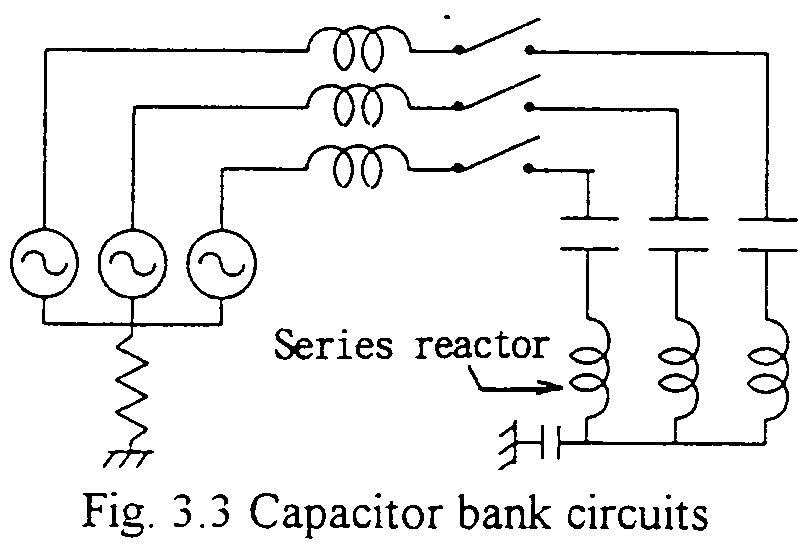For compensation purpose in today's high power electric power systems, huge amount of capacitor banks are installed. Typical voltages of those in Japanese systems are 22, 33, 66, 77 and 154kV, with the highest capacity of 120MVA. In Japan, every of the capacitor banks has "Series Reactors" connected in series to the each phase of the capacitors, see Fig. 3.3. The main purpose of the reactor is to suppress the inrush current during switching on and also to suppress the harmonics currents. The standard value of the reactance is 6% of the rated capacitive reactance. Of cause, the effect of the capacitance is cancelled by 6% in combination.

In foreign countries, mainly due to economical reason, such series reactors are seldom applied. Without the reactor, while closing to energize a capacitor bank which is adjacent to an another capacitor bank already in service, extremely high inrush current may flow. Such circumstance is called as "Back to back closing."
While in service (energizing), the voltage across the capacitance is higher by 6%, so after interrupting the current, the residual voltage is also higher by 6%. At the instant of the current interruption, spike voltage with the maximum of two times 6% of the phase peak voltage due to the reactor oscillation appears and superimpose to the voltage oscillation in the source side. Fig. 3.3 shows usual three phase "Un-grounded" capacitor bank circuit. Excluding the effect of the reactor, the maximum recovery voltage across the circuit-breaker is 2.5 p.u. Detailed EMTP calculation corresponding to the condition in Fig. 3.3 is attached where due to the effect by the reactor, the maximum voltage across the circuit-breaker terminals is 2.7 p.u.
Care should be taken that restrike during switching causes serious effect due to the high energy, so should (or even shall) be avoided. At the same time, switchings capacitor banks are carried out very frequently, even daily or several times a day.